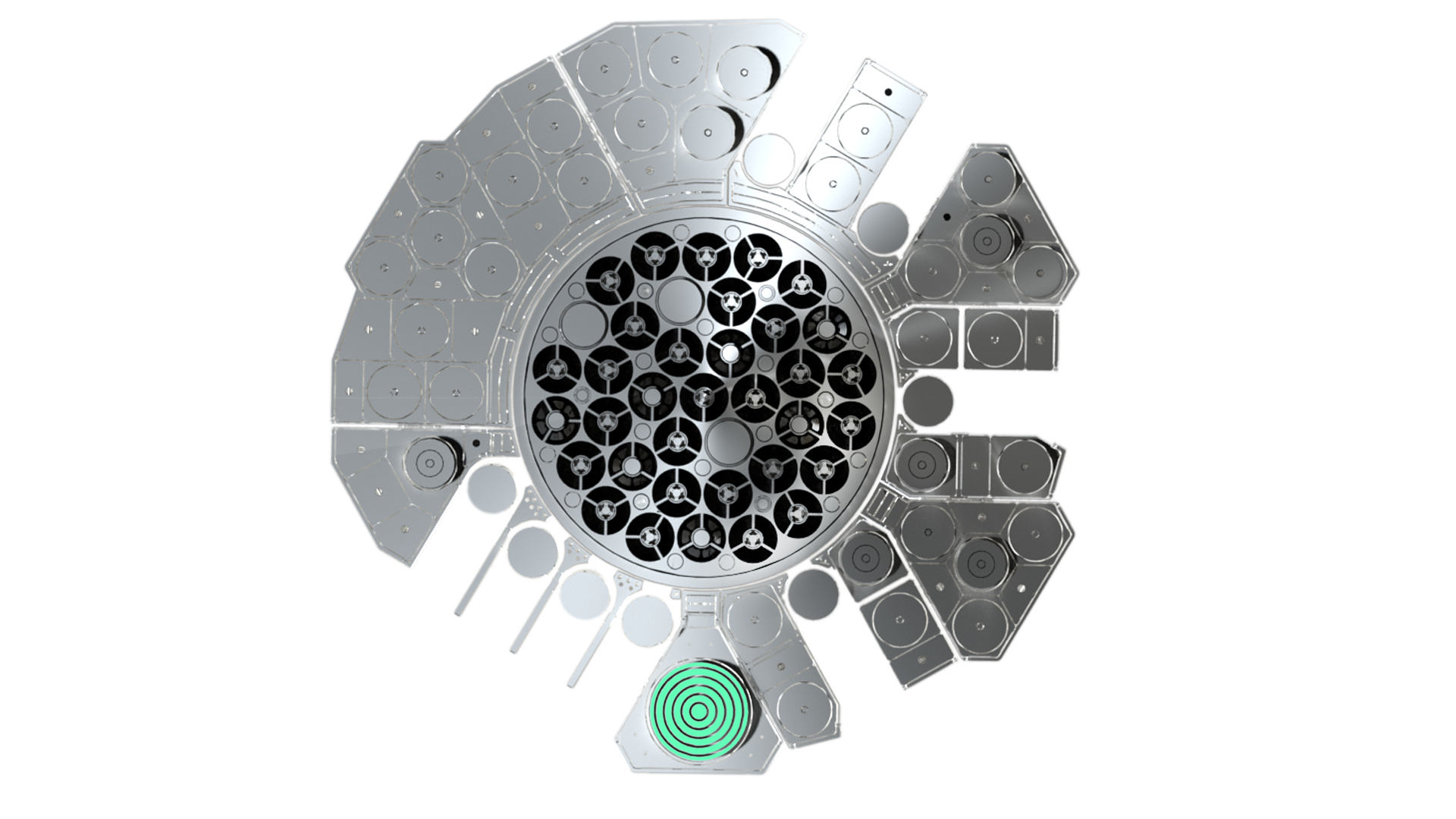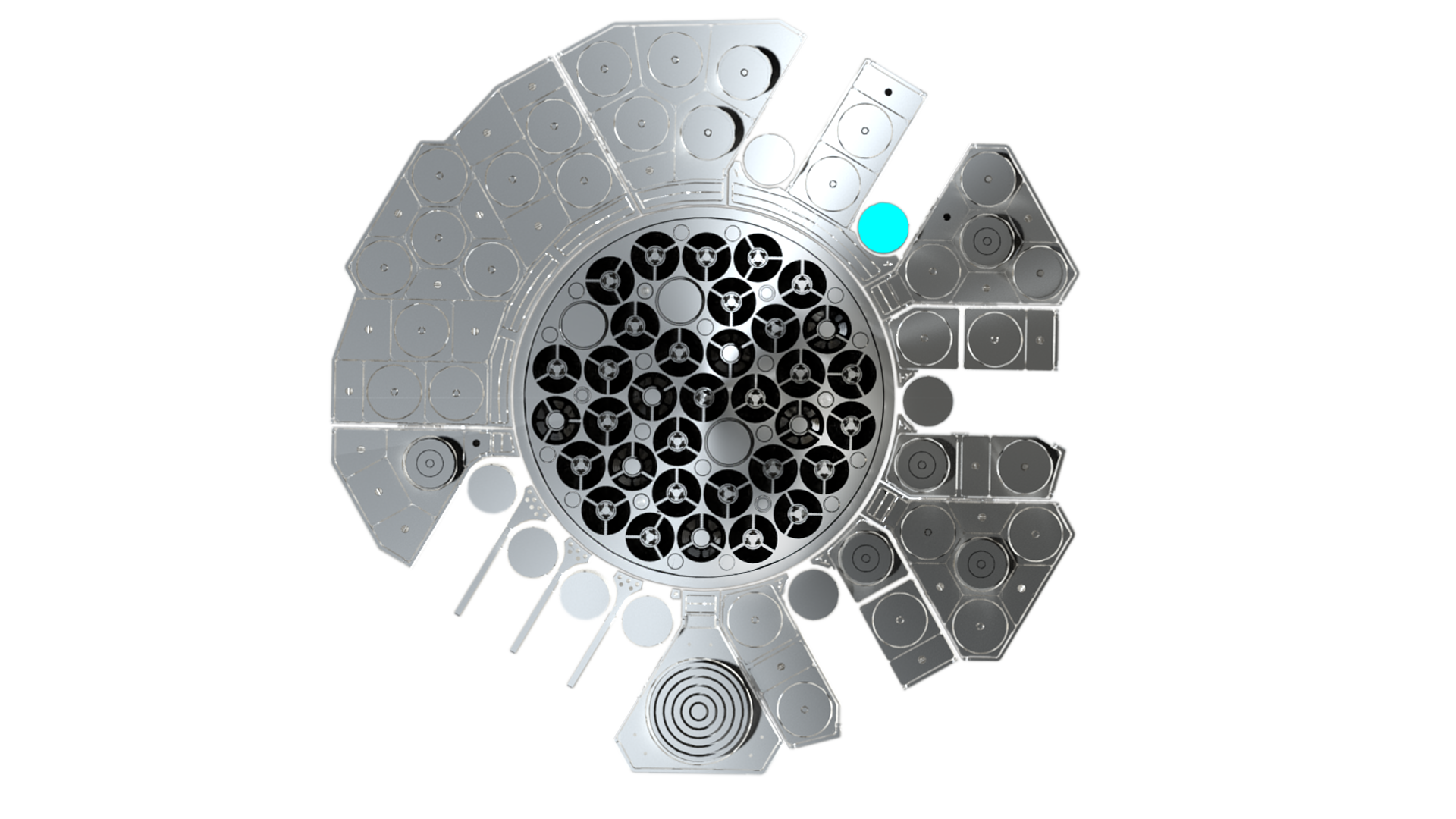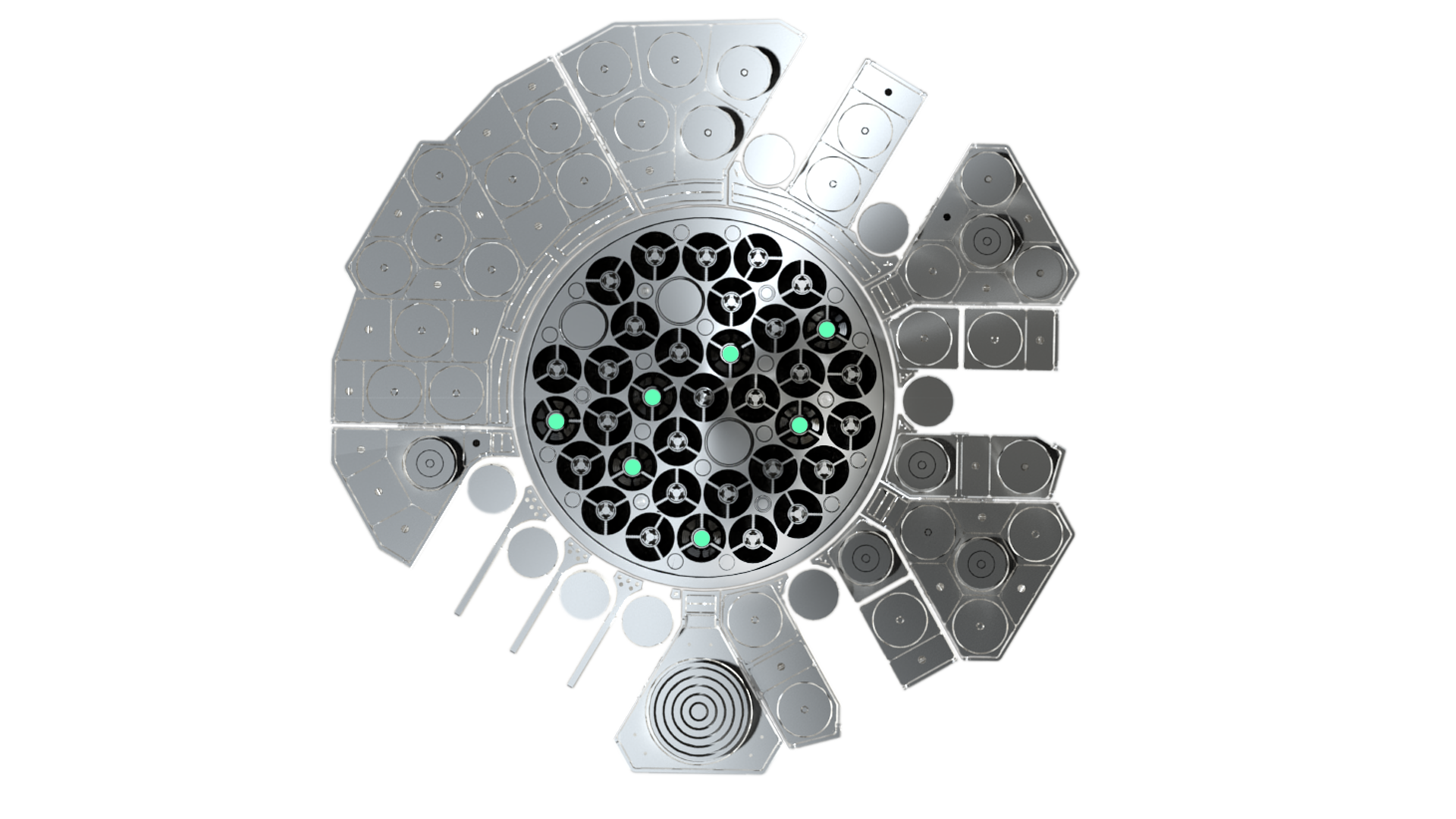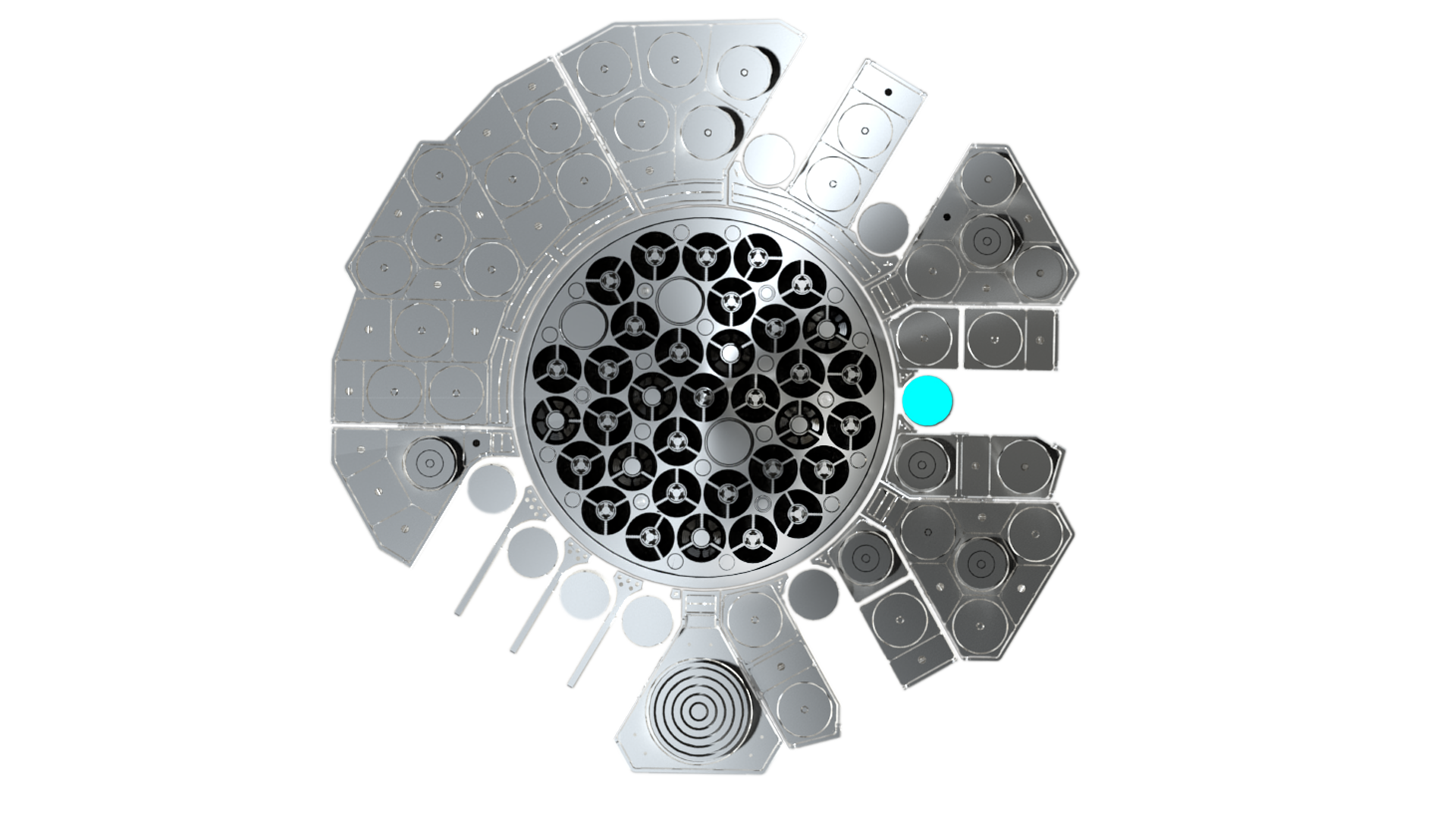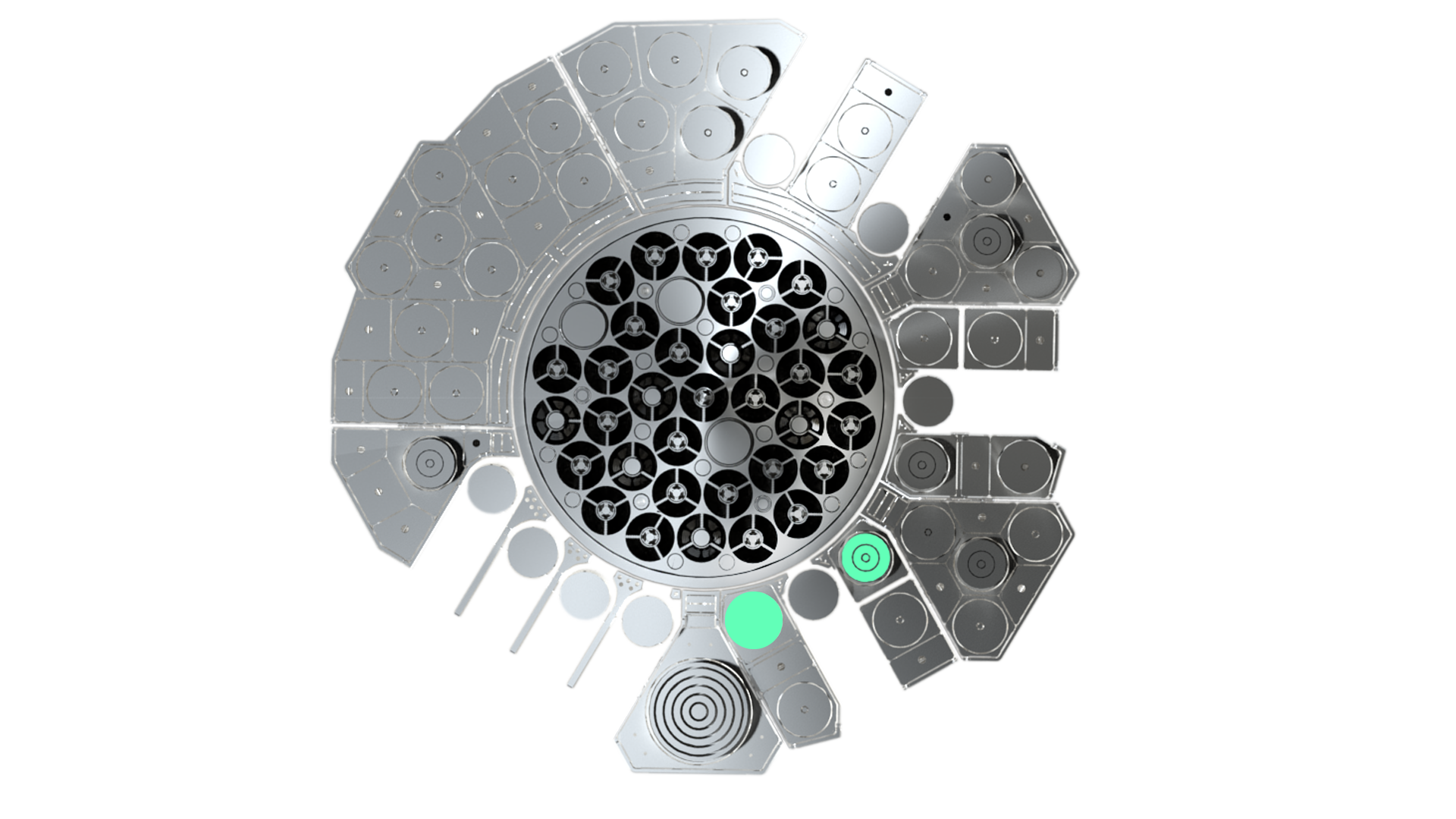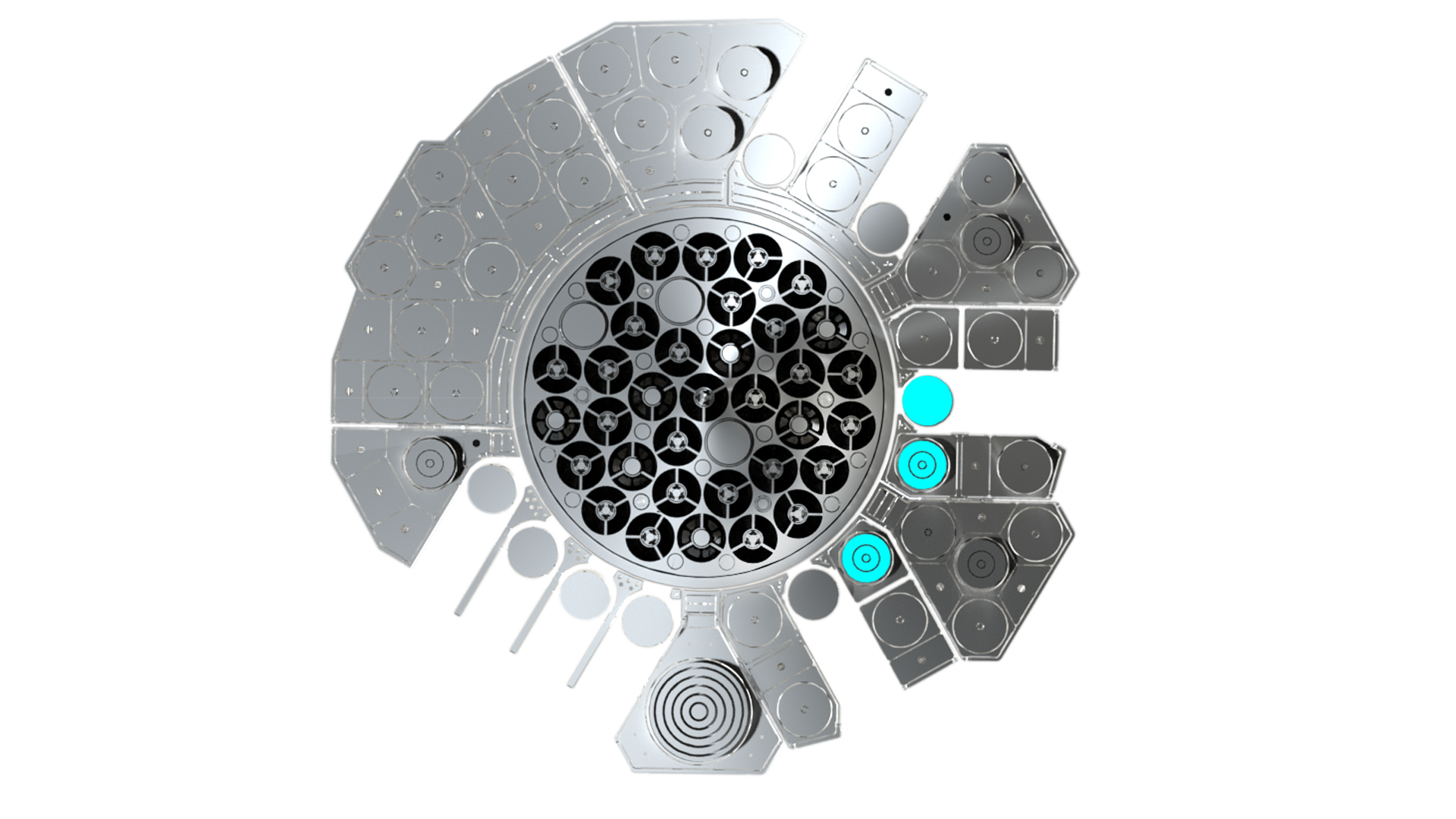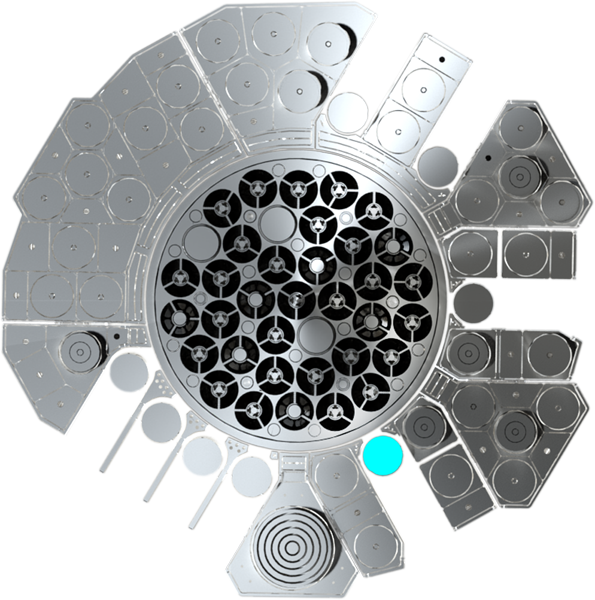
ADELINE
The ADELINE test device is designed to host a single experimental fuel rod from any LWR technology in order to reproduce various experimental irradiation scenarios in which cladding failure is either a risk or an experimental objective. Similarly to the MADISON test device, this device comprises an in-core section placed on a displacement system in the JHR Material Test Reactor reflector and an out-of-core water loop. Fresh or pre-irradiated fuel rods can be used to perform power ramp tests, rod internal over-pressurisation (lift-off), gas sweeping of the internal free volume in the fuel rod or to test power-to-melt approach margins.
The first version of the ADELINE device focuses on power ramp testing. More specifically, the design has been optimised to provide a qualified thermal balance (with a targeted accuracy of 5-6%) and good accuracy at the time of cladding failure; it should provide detailed information about the linear power inducing the failure. A quantitative gamma spectrometry system will be used to quantify the radiological source term released into the coolant in the case of rod failure.
Some improvements have been made to allow for online quantitative cladding elongation measurements during power transients and to manage several successive experiments during one reactor cycle (up to 3 ramp tests per cycle). In addition, this experimental device can be adapted to manage highly instrumented experiments with fuel and cladding temperature measurement and fission gas release measurements by gas sweeping.
A typical PWR power ramp sequence comprises the following phases:
⦁ A low-power plateau (from 12 hours up to 7 days) with control of the cladding surface temperature while the sample linear heat rate is controlled between 100 and 200 W/cm, depending on end-user requirements
⦁A linear power ramp at a continuous rate between 100 and 700 W.cm-1.min-1
⦁A high-power plateau that may last 24 h (performed if the cladding has not failed during the power transient).
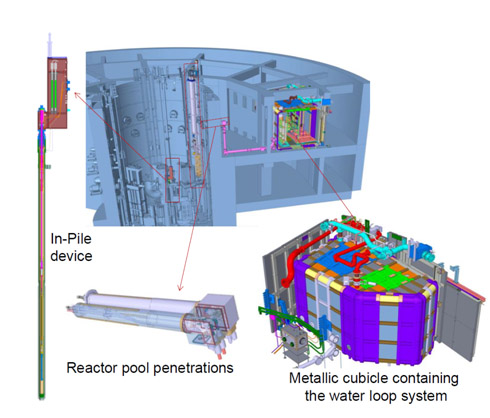
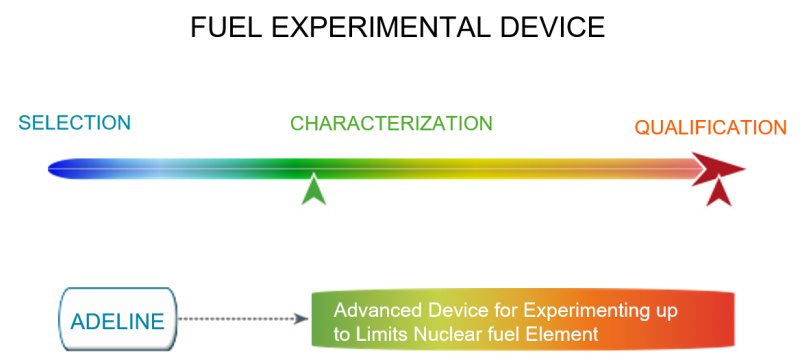
The JHR has been designed with a full set
of experimental devices making
it possible to conduct the experiments
needed to characterise,
select and qualify new fuels and materials.
Some of these experimental devices
are capsules while others are loops,
which makes it possible to adjust
the experimental conditions in real time
to obtain even better results.

